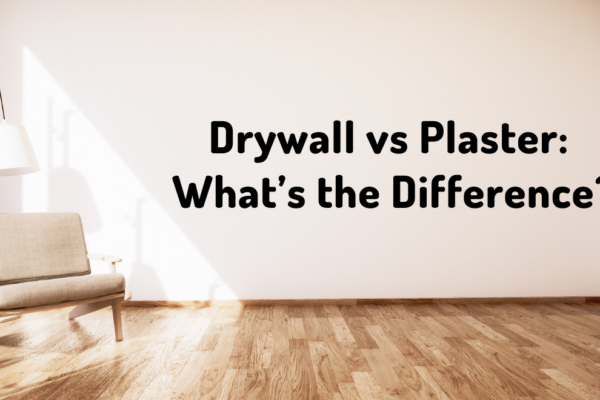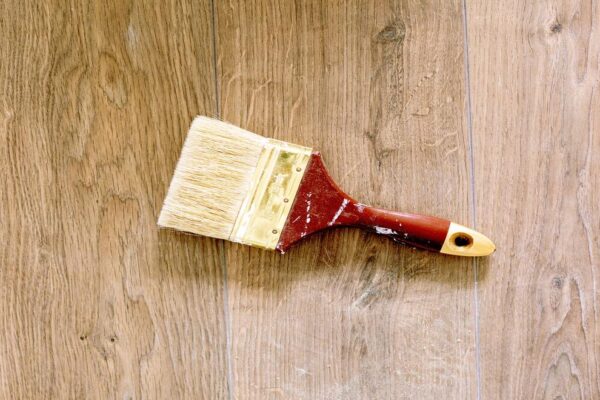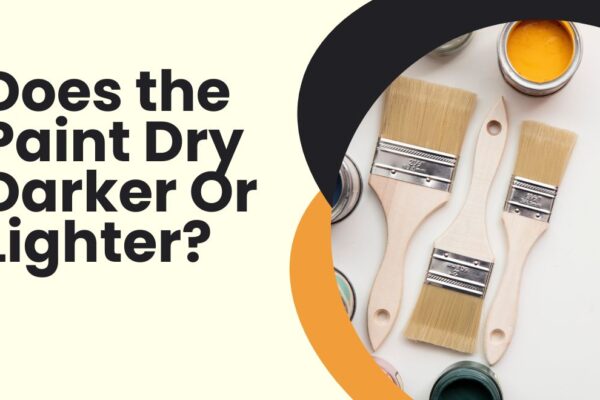On occasion, paint dabs that you missed while the painting was being done may be visible. The answer to the question of how to remove paint from a hardwood floor might never be easy to come by. Here are the steps for removing paint from hardwood floors.
Although you want to preserve your hardwood floors, you are prepared to paint the living room. I’ve encountered this problem more than once; it can be challenging to remove paint from hardwood without destroying the finish. Don’t worry; these methods will work for any type of wood and will help you remove paint from hardwood floors without harming the finish.
Materials That You’ll Need
- Paper towel
- Clean rags
- Dish wash soap
- Water
- Denatured Alcohol
- Dull knife
- Scrub brush
- Paint thinner
- Cleansing pads
Preparation of the Floor
The first step in performing any maintenance task on the floor surface is to prepare the surface. To make the paint drops visible, you remove any grit, dust, and dirt from the surface. Before moving forward, determine whether the paint is oil- or water-based.
A solvent or a scraper can be used to either dissolve the paint or remove it. Compared to acrylic paint, removing old oil-based paint can be more difficult because some of the potent solvents used to dissolve the paint can harm the finish on the floor.
Prior to using commercial solvents, always explore non-chemical options for removing paint from hardwood.
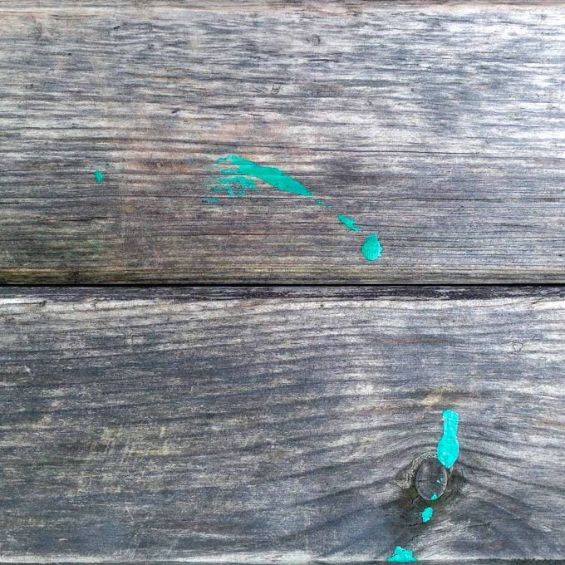
How to Get Water-Based Paint Off Hardwood Floors?
Some of the best ways to remove paint from wood floors are listed below.
Soap and Water Technique
Working with water-based paints has some wonderful benefits, one of which is the ease with which paint can be removed from wood floors with just some soapy water.
Dish soap appears to work particularly well, but virtually any mild soap that is safe to use on wood flooring will work.
Several caveats are needed here. It’s important to remove any remaining soapy water after removing paint from hardwood floors and to use as little moisture as possible when cleaning up paint.
Wood floors enjoy soaking up any moisture they can, which can result in swelling, warping, and a rougher surface that needs to be refinished if you want to keep your wood floors looking brand-new.
This is also a method that’s more effective the sooner you’re able to clean up the spill.
Water dilution and mixing with the paint make the water-based paint functional. Because the binder in oil-based paints and other types of paint is typically not water-soluble, water won’t always work with those paints.
In order to prevent paint residue from getting into the hardwood floor’s grain, soap helps lift paint pigments and other ingredients as well as any remaining paint.
All you need for this method is:
- Soap
- Warm (not hot) water
- A rag, towel, or other soft cloth
- A sponge to clean up
Prior to cleaning, it is ideal to blot up as much paint as you can with a sponge or towel.
Then, dunk a rag or washcloth in warm water mixed with a few drops of dish soap; this shouldn’t be much. Rub the paint stain gently until it comes off the wood surface.
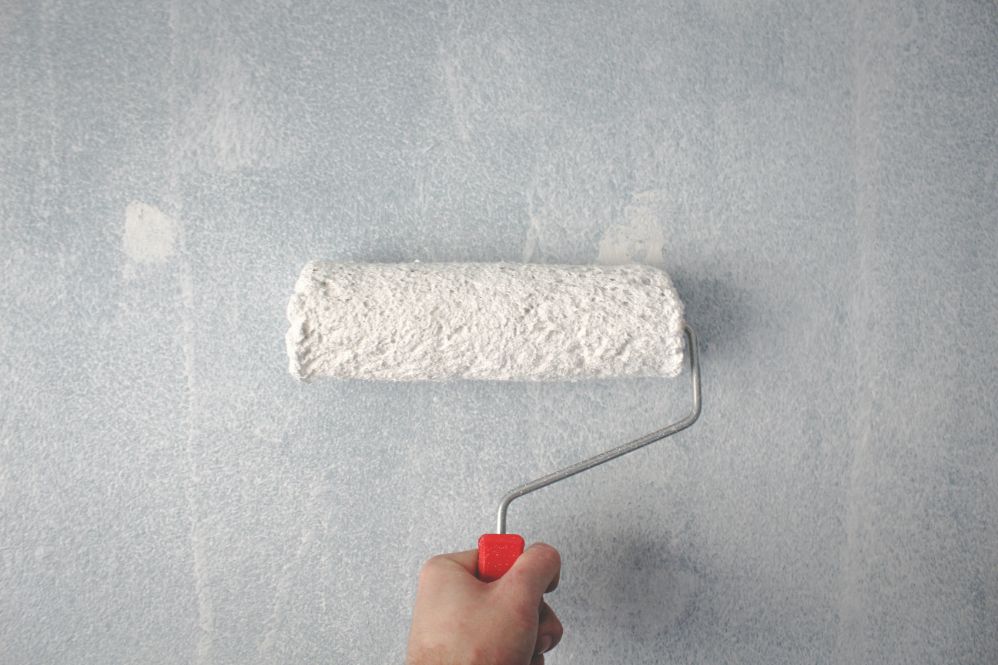
Following the removal of all the paint you can, you should also dry the water from the wood floor. That’s it!
The only type of paint that can be removed with this method is water-based paint, and it works best for recent paint spills and small paint stains.
You might want to go with a more robust option if this one isn’t an option, doesn’t completely remove paint from your wood floor, or you’re working with hardened paint.
There are other options for soap in this situation besides water and dish soap. To protect your floors, you can use any mild soap or the same hardwood floor cleaner that you already use.
You Might Also Like:
- How Long Does Spray Paint Take to Dry?
- How To Get Spray Paint Off Concrete?
- Can You Use Interior Paint Outside?
- How To Clean Your Paint Brush And Roller Cover?
- Can You Use Masonry Paint On Wood?
- 11 Simple Ways to Get Rid of the Paint Smell in Your House
- 4 Best Paint Brush For Cutting In: Paint Your Home Now!
Lemon Juice and Rubbing Alcohol
Lemon juice and rubbing alcohol are an improvement over soapy water. This combination works well to remove dried paint from wood floors or to help remove tough paint stains.
Even if there is only a small amount of paint splatter across the area, this can be a better option than soapy water for larger paint stains or if you need to remove paint from a large area.
The good news is that this method of paint removal is non-toxic, though you may still need some protection from the alcohol fumes. The bad news is that using lemon juice and alcohol to remove paint will require a little more equipment. Here’s what you need:
- Lemon Juice (from concentrate is fine, you’ll probably need a good amount)
- Any type of high-proof cleaning alcohol, such as rubbing alcohol or isopropyl alcohol.
- A wood scrub brush
- Rags/towels/cleaning cloths
- A sponge
- A bucket or bowl for the lemon juice and alcohol mix
- A rigid plastic putty knife or paint scraper
- (Optional) a face mask or respirator
If you’re working with paint in a small space and don’t really have a good way to increase the airflow where you’re going to be working, a respirator is a good option. Otherwise, you can control any alcohol fumes you might be exposed to by wearing a simple mask or even just turning on a fan close by.
It’s also important to be aware that alcohol can be extremely drying for your wood floor, so you should make sure it’s safe to use with any varnish or finishing layer that seals your wood floor.
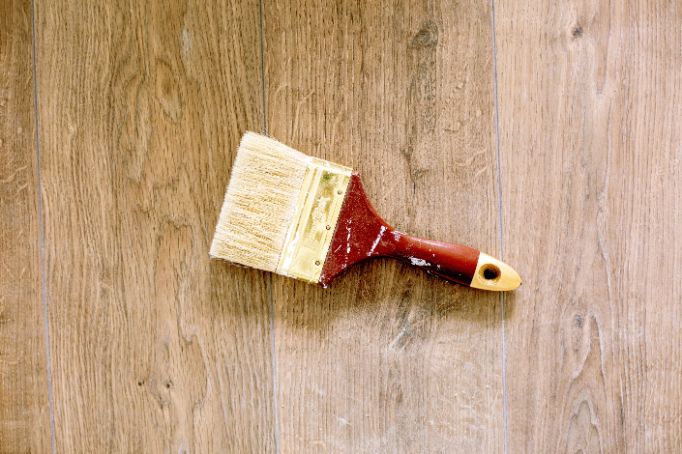
This technique removes paint quickly and easily with little effort, much like working with soapy water. Lemon juice should be combined with a few drops of alcohol (up to a tablespoon or two depending on how much paint remover mix you’re making).
Plan to use at least 1/4 cup, or roughly half of ripe lemon, of lemon juice, or for convenience, use store-bought concentrate.
Put some of the mixtures on a cloth or sponge, then place it over any dried paint you want to remove. After soaking for about five minutes, try using a soft scrub to try and remove the paint. It’s time to switch to a scrub brush or a scraper if the paint starts to lift but isn’t removed by scrubbing.
You can simply begin scrubbing to assist in lifting the paint off your floor if it isn’t yet completely dry. Due to its smaller molecular structure, which can penetrate deeper and lift the paint residue, the alcohol helps ensure that you get all of the paint, including any dried paint.
Lemon juice helps to provide some acid, which can help remove difficult paint stains and lighten a stained wood floor.
Sanding
Due to how abrasive it can be, sanding is typically the last resort for removing paint. A power sander, coarse- and fine-grit sandpaper, a dust mask or respirator, and something to refinish your wood floor after sanding is required for this method.
Sanding a small, out-of-the-way area of the floor and observing how the floor changes can help you determine what you need to finish it.
- If the color changes, it may have been stained with wood stain.
- During the sanding process, does a yellowish layer flake off? It’s most likely wood varnish.
- Does your sandpaper contain a lot of wax? Congratulations, you now have a waxed floor.
You can obtain small sample sizes of various products and test them for compatibility with the rest of your floor in that same remote area if you’re unsure of what was used.
The wood floor finishing required to help restore your flooring should be available at your neighborhood home improvement store.
After learning how to refinish your floors, start by using other techniques to remove as much paint as you can. When there is nothing left to remove with other techniques, take a power sander out and sand the wood in small circles or with the grain until all traces of the stain are gone.
To make the floor’s surface even and smooth, you’ll probably need to sand a larger area than where the paint stained it.
Keep your depth in the wood to no more than 1/4 inch. You’d be better off replacing the floor if the stain penetrated deeper than that. A noticeable dip in the floor will be present once it is deeper than 1/4 inch.
How to Remove Latex Paint From Hardwood Floors?
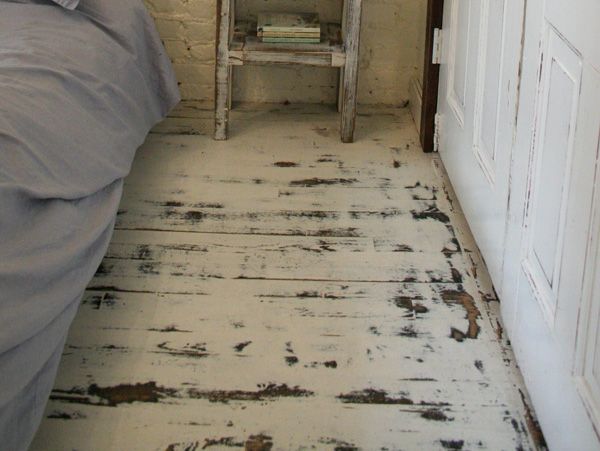
So if you are wondering how to get latex paint off your hardwood, here are some of the ways to go about it.
Use Paint Stripper
One of the best options for removing paint that has dried or has started to dry is a paint stripper. As opposed to oil-based paints, make sure you’re using a formula made to work with latex-based paint.
Simply dab a small amount of the stripper onto the paint stains, and wait for the stripper to bubble or change color, which should take around 20 minutes. Afterward, take a cloth or scrubber and lift the paint and paint stripper at the same time.
To make sure the stripper doesn’t lift the wood finish or alter its color or texture, test a small, out-of-the-way area before using it on wood floors.
Additionally, whenever you’re working with a paint stripper or paint remover, it’s crucial to wear a respirator and gloves, and have good ventilation in your work area.
Use Heat to Lift the Paint
For latex-based paints, heat is still a viable option. This works because the heat can cause the paint to actually contract within itself and aid in lifting it off the underlying surface. If the paint has seeped into the cracks in your wood floors, this may not completely remove it, but it can be an effective way to get rid of a lot of it.
To try this technique, you won’t need much-specialized gear. Most of the time, a hairdryer can generate enough heat to remove paint from wood floors, and a crafting heat gun is typically secure and provides just a little bit more heat.
Turn on the hair dryer or heat source, then wave it across the paint’s surface while holding it 6 to 8 inches off the ground. To get a better lift, you should try to heat the paint evenly, but if you need to lift a lot of paint, you can also work in sections.
Once the paint starts to wrinkle on top, use a metal or plastic scraper to assist in lifting it. The painted floor will initially have a few small sections of paint lifted off of it, but as you work, you might start to pull off strips of dried latex paint. Continue until either all the paint has been removed or the paint stops lifting and wrinkling off of the wood floor.
Try Steam
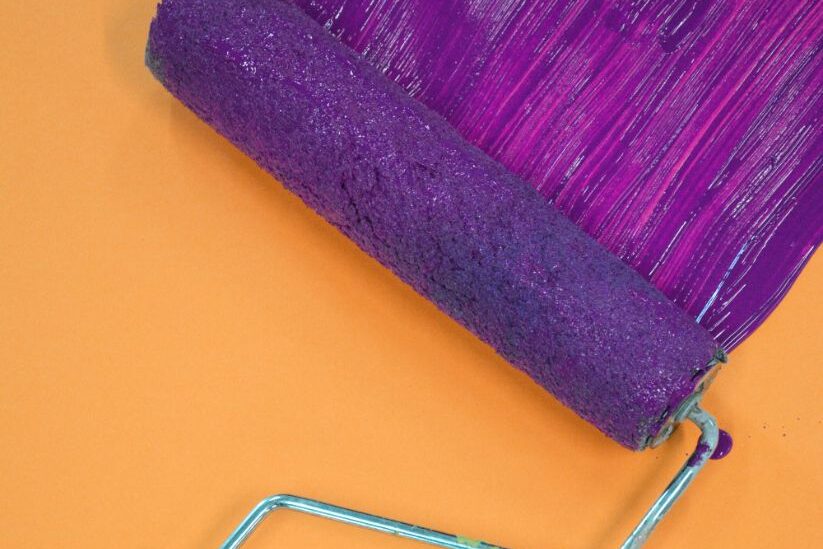
Another excellent choice is steam, which can penetrate the paint and lift latex from your wood floors with its added moisture. If you have access to a store that rents steam tools nearby, you can also use a steam cleaner or even specialized steam tools for removing paint and wallpaper. A steam clothing iron may also be effective.
To avoid accidentally damaging the wood floor underneath, the trick is to avoid using too much steam or heat when removing paint. Check to see if the paint has changed by applying a little steam, waiting for it to clear, and then checking again.
Continue doing this until the paint lifts, wrinkles, or bubbles at the proper temperature and steam ratio. Use a scraper to remove the paint from your wood floor when any of those signs of paint lifting appear.
A scrub brush can also be used to help get rid of any minor debris that may have been overlooked. For the final pieces, think about using paint remover if that doesn’t work.
Using a Mixture of Lemon Juice and Rubbing Alcohol
Note that you can remove latex paint with tools that are easy to find at home. The good news is that neither you nor the environment is endangered by these materials’ potential health risks. Here are the steps:
- Step 1: In a container, combine one part lemon juice and three parts rubbing alcohol to make your cleaning solution. Mix well.
- Step 2: Put some of the solutions on a clean cloth.
- Step 3: The latex paint on the hardwood floor should be rubbed with a wet cloth.
- Step 4: Scrub the latex paint off the wood using a brush with brass bristles.
- Step 5: After that, use a damp cloth to wipe the floor to make it clean. Till you are content with the results, repeat the process.
How to Remove Oil-Based Paint from Hardwood Floors?
Here are a few techniques you can use to remove oil-based paints from wooden floors.
Using Denatured Alcohol
Utilizing alcohol is another option you can test out at home. Denatured alcohol should first be applied to the stain with a rag and allowed to soak into the paint for 20 to 30 minutes so that the paint can absorb enough alcohol to break up the stain for straightforward removal.
Wipe off any extra paint on the wood floor and scrub the paint with a scrub brush in a back-and-forth motion. When you’re done, make sure to leave a dry surface.
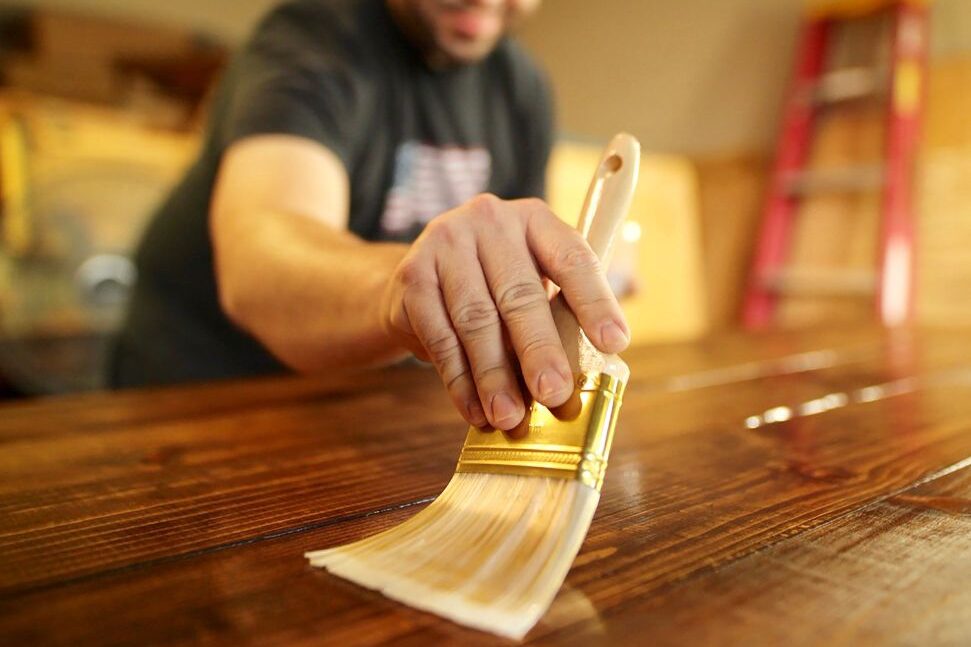
Use of a Cleansing Pad
Visit a nearby pharmacy to purchase an alcohol-based cleaning pad. Next, use one of the paint cleansing pads to scrub the paint stain. Until the paint is removed from the floor, use a fresh cleansing pad when the previous one dries up.
Remove Old Paint Off Hardwood Floors Using Paint Thinner
The last option for removing paint from the stained wood floor should be to use thinner. Due to the finish being easily removed by the thinner, exercise extreme caution. Ensure that the space you’ll be working in has adequate ventilation. When you have completely removed all of the paint from the stain, blot a small portion of a rag with the thinner.
When to Call a Professional?
Any time you are working on a hardwood floor issue, you should think about speaking with a nearby qualified contractor. Contact your neighborhood home inspection team if you’re unsure who to hire. Furthermore, you want to be aware of every potential aspect of any major task you are given.
You may get suggestions for additional projects to finish after having a home inspection team out. Furthermore, they can recommend the best and most reliable professional contractor to help with your projects, which could save you time and money.
FAQs
What Can I Use to Clean Paint Off Wood Floors?
A rag and warm, soapy water are required. Paint the floor wet, then let it sit for a few seconds. After that, use the cotton swab to rub the paint away. Wipe off any remaining paint and water, and then allow the surface to air dry.
How Do You Get Dried Paint Off of Hardwood Floors?
Sanding or a paint scraper, along with soap and water, are both effective ways to remove dried paint from hardwood floors. Rubbing alcohol, denatured alcohol, a paint-removing solvent, paint thinners, or cleansing pads are additional options.
Final Thoughts on How to Remove Paint from Wood
It’s simpler than you might imagine learning how to remove paint from hardwood floors. There are a variety of methods you can employ to get rid of paint stains, depending on the type of dried paint you’re working with. With the help of mineral spirits, paint thinners, and even lemon juice, painting wood floors can be easier than you might imagine.
However, if you are unsure of the type of wood you are cleaning or the age of the floors, consulting a professional is your best option. Saving money is a good idea, but hiring a professional local contractor might be preferable.


